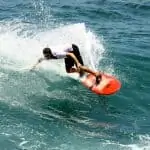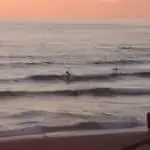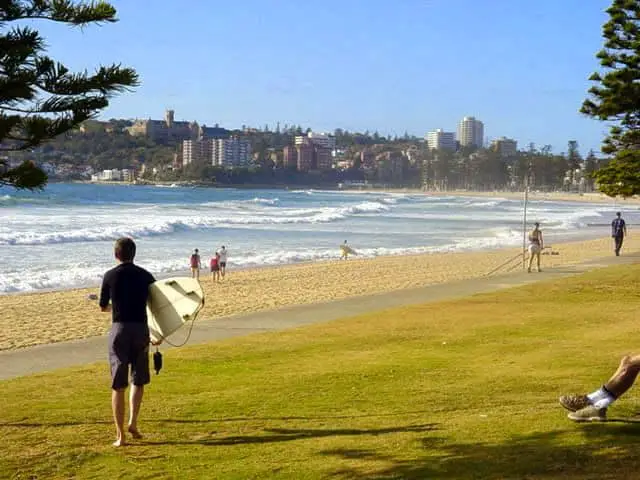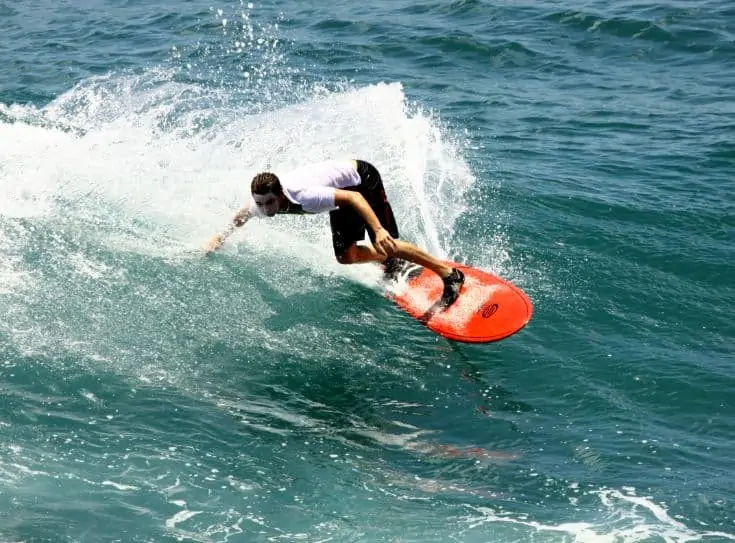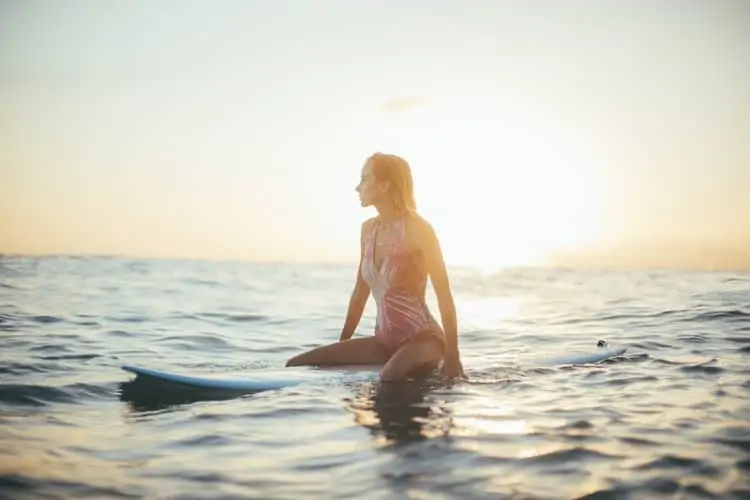6 Tips for Learning to Surf in the Whitewater
Learning to surf is a fantastic way to get some exercise and fun way to spend free time, out in the ocean enjoying the waves.
However, there are many stages in learning to serve that beginner Surfers must go through to get to a point of riding unbroken waves and having fun.
In fact, you can learn to surf in smaller waves than you think, among the already broken waves.
So, how do you surf whitewater? After heading out into the surf, point your board to shore, hop on before in a good position before a wave comes and then start standing up when you feel it picking you up and moving you to shore, as you can see in the relevant part of the video below on this topic:
Now, with that explanation, below are my key tips for learning to surf in the whitewater, helping you to learn faster, have more fun and stay safe while doing it – let’s get to it!
Stay Close to Shore
The beauty of learning to surf in the whitewater is that you can stay close to shore at all times.
Surfing in the whitewater as a beginner has several advantages, including:
- Safety
- Ease
- Riding More waves
- Fun
Safety
It’s safer to be closer to the shore because if anything goes wrong, you can literally walk out of the sea to safety.
You might get bumped by your board, feel tired or just cold and want to get out straight away. If so, you’re in the right place since this means that you can turn around and head to shore in a few seconds, which is a huge confidence booster, too.
Hopefully nothing will go wrong, but it’s always good to have this peace of mind when you’re learning to surf, especially since the ocean can be an unforgiving place!
Ease
It’s also infinitely easier to try and learn to surf in the whitewater than further out to sea because you can
In fact, you don’t really need to be able to paddle much to learn to surf, you can just hop on your board at the right time and give a couple of strokes, then let the whitewater do its thing and push you to shore.
Because the waves in this area are already broken, you can just hop on your board when one comes your way, making it easy to catch them.
Riding More Waves
In addition to the points above about how easy it is to learn to surf in the whitewater, there is also be less competition for waves in this area, meaning you don’t need to worry about collisions or other surfers so much.
With less competition and easier wave-catching possibilities, you will find yourself catching many more waves if you learn to surf in the whitewater than further out.
Fun
Learning in the whitewater just makes for a much more fun experience because of the above points combined.
Instead of trying to force things and learn with more advanced surfers, taking it easy in the whitewater means you don’t have the stress of crowds or paddling to worry about, while also helping you to catch more waves, which after all is the point of learning to surf!
Surfboard, Wave, You, Shore – in Order!
One key rule that many new surfers don’t know is to never stand behind your surfboard when a wave is coming towards you!
You will be surprised at just how hard even a broken wave can hit you and your board.
This force is amplified if your board is at an angle that catches more of the power of the wave, so always keep your surfboard with the nose pointing straight at any oncoming waves when out in the surf.
As for you, position yourself to the side of your surfboard as you learn since any wave that hits you will not then throw the board into your body or face.
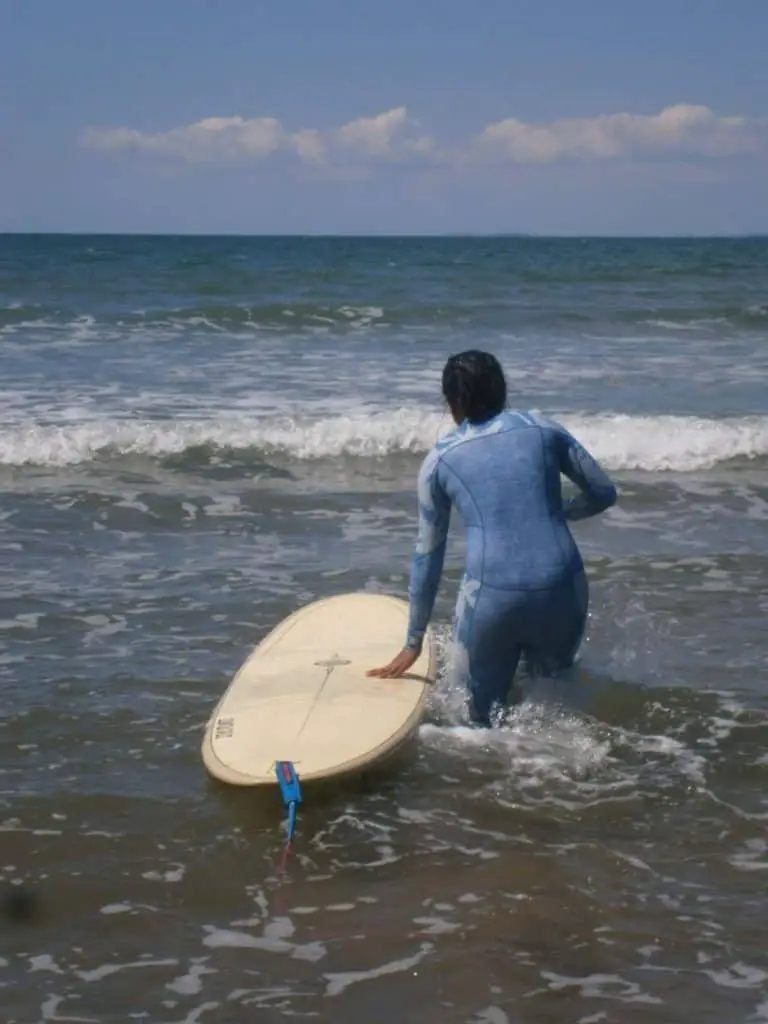
Just remember to lift the nose of the surfboard up slightly as a broken wave approaches so that your board floats over the top and lets the wave rush under it. It’s also a good idea to have both hands holding the board firmly at all times, too
Quiet But Safe
Even in the whitewater, surf accidents can still happen. With this in mind, go somewhere quiet but still in view of others.
This could be to a different surf spot or just walking a bit further down the beach, but there’s usually no need to head out directly into a crowd as that has its own hazards!
However, balance this with the thought that some parts of the beach may be quiet because of underlying rocks or even stronger currents (as we’ll look at next).
As such, make sure that somebody can see you from shore at all times. This means that, if anything does go wrong (however unlikely), they can help you out by at least raising the alarm.
Having fewer people in the surf will also be a little more relaxing as crowded surfing line-ups can make for a busy and hectic environment, taking away from the fun of learning.
Rip Currents = Big ‘No no’!
If you head out, even only into the whitewater, and feel an undertow or rip current, turn around and get out immediately.
This is because, apart from the obvious dangers of rip currents in the sea, you may also not be able to paddle back in to shore if the current takes you out to sea.
With this in mind, you can look for warnings or signs at the beach talking about currents and safety for swimmers. If there are none, and you are not familiar with that beach, ask people there (ideally other surfers) about the safety and for any hazards.
You will find that most people are more than willing to share their knowledge on these points so a few quick questions can go a long way.
Soft is Best
By the above, I mean that you should be using a soft-top surfboard to learn in the whitewater since these kinds of boards are designed specifically for learners (although I also have one in my quiver as they are just so much fun!)
Using a ‘softboard’ is better since their softer surface makes them more forgiving if you fall on the board or even if the board does hit you.
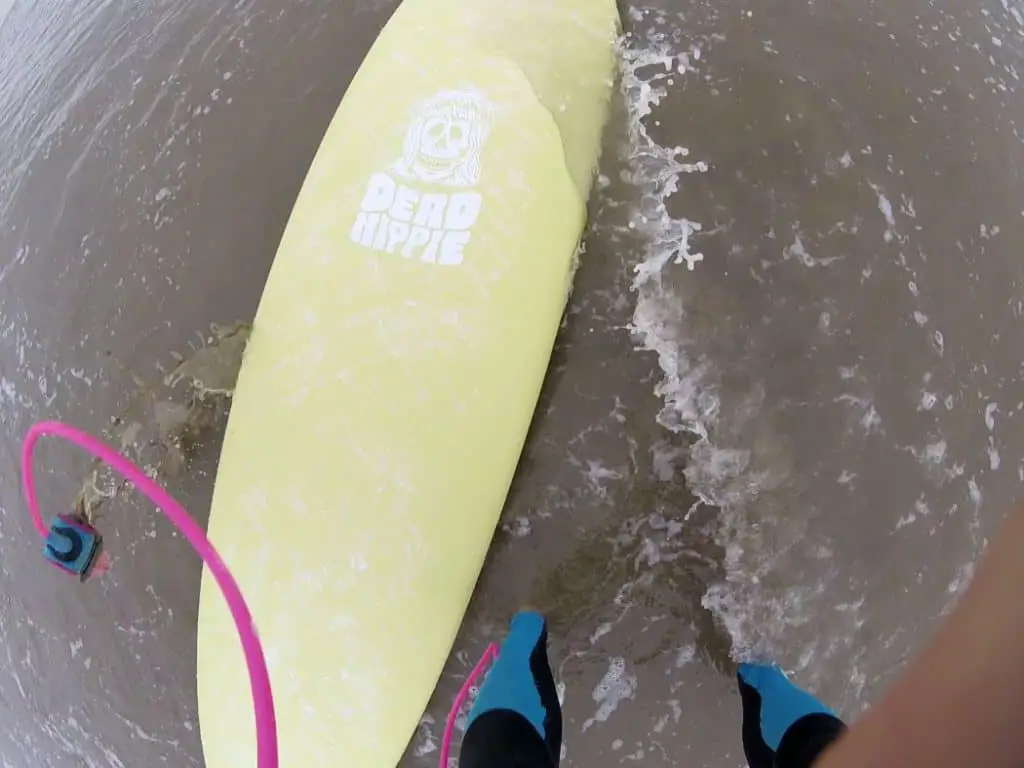
To go with the more forgiving material of a softboard, these boards also have a generous and wide template that allows for catching and riding more waves, making them ideal for learning on.
If looking for a board, check out my guide to the best beginner surfboard brands now!
Mid-Tide is Your Ticket to Ride
When choosing the best time to surf, you should also avoid extreme stages of the tide, namely high tide or low tide.
This is because this stages of the tide often come with a few hidden dangers, although not every surf spot is the same so it will depend on where you are surfing.
For instance, at high tide there may be a shorebreak, making for dangerous learn to surf conditions since this means that the waves can dump directly onto the sandy shore!
At the other extreme, full low tide can often have more currents than at many other stages of the tide, especially before low tide when the sea is still in the outgoing tide phase.
I also have a more detailed breakdown of the best time to surf for learners, so be sure to check that article to help you decide on the right time for your surf session!
Related Question
How can a beginner get better at surfing? The secret is to go as often as you can, choose the right spots to learn at, use the right board for your ability and make sure you are learning in a place where you can catch as many waves as possible.
When not able to surf, you should also focus on improving your overall fitness and conditioning as this will go a long way to helping you get better at surfing.
That said, none of this is an overnight thing and it will still take many hours of practice to make those all important gains in the surf.
In case you are wondering how long this might be, check my dedicated article discussing exactly how long it takes to learn to surf, from beginner to advanced!
